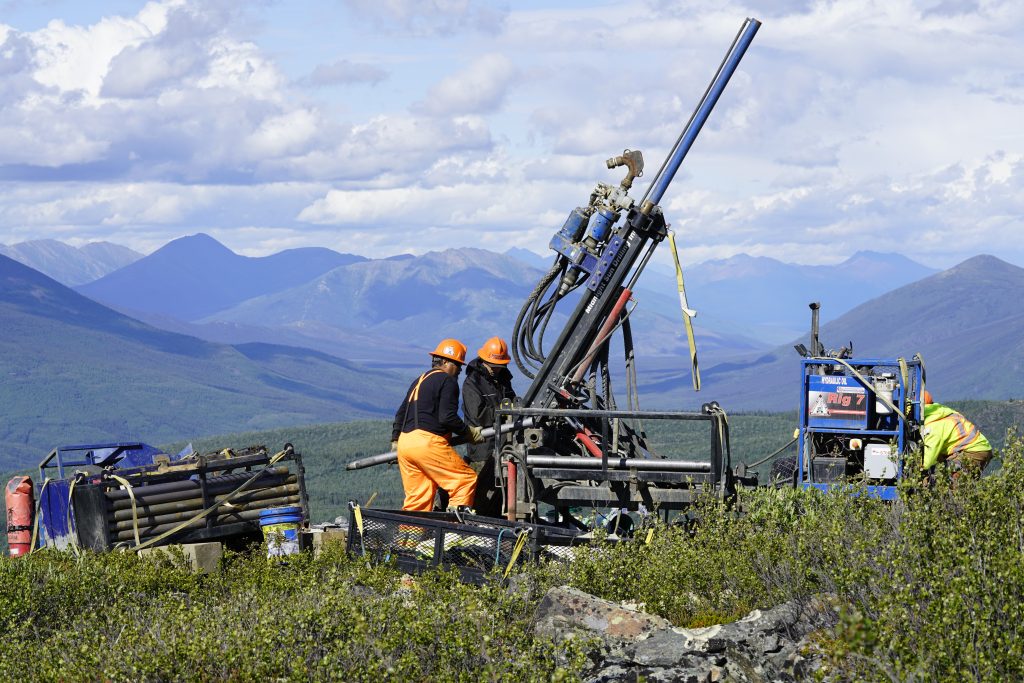Metallic Minerals intersects 0.41% CuEq over 816 metres at La Plata, Colorado

Metallic Minerals Corp. [MMG-TSXV; MMNGF-OTCQB] reported final results from its 2022 exploration program at the La Plata copper/silver/gold/platinum group element project in southwestern Colorado. Two holes totaling 1,730 metres were drilled to test lateral extensions of the existing 985-million-pound copper equivalent NI 43-101 mineral resource1.
Hole LAP22-04, drilled to the north of the resource area, intercepted the longest and highest-grade interval ever encountered at La Plata at 816 metres of 0.41% Recovered Copper Equivalent (CuEq). This is one of the top intersections for any North American copper project in the past several years. Significant high-grade gold-platinum-palladium (Au+PGE) mineralization associated with copper and silver represents the discovery of a new style of mineralization in the resource area that has not been previously recognized or explored for.
The porphyry style mineralization in LAP22-04 strengthens through the hole, transitioning from chalcopyrite dominated at surface to bornite-rich at depth. The hole ended in mineralization with the final 5.2 metres of copper plus precious metals rich mineralization grading 5.39% CuEq (2.44% Cu, 18.7 g/t silver and 5.0 g/t Au+PGE but did not reach full target depth due to mechanical issues. The last sample in the hole, representing the deepest material, graded 5.42% Cu, with 47.0 g/t Ag and 11.0 g/t Au+PGE for a total of 11.54% CuEq.
Mineralization remains completely open to expansion of the current resource area and outward from drill hole LAP22-04. Both drill holes intercepted continuous porphyry style mineralization starting from surface and ending in mineralization at 914 and 816 metres depth, respectively. Hole LAP22-03 shows that the shallow porphyry style mineralization is weakening to the south and west of the resource but still open at depth.
Drilling Highlight: Drill hole LAP22-04 intersected 816 metres of 0.41% CuEq (0.30% Cu, 2.47 g/t Ag, 0.186 g/t Au+PGE) from surface, with multiple higher-grade intercepts.The interval starting at 304.8 metres returned 511.2 metres at 0.51% CuEq (0.36% Cu, 2.83 g/t Ag, 0.275 g/t Au+PGE). Higher-grade zones include 0.90% CuEq over 55.8 metres (0.70% Cu, 5.44 g/t Ag, 0.369 g/t Au+PGE and 1.5% CuEq over 29.57 m (0.69% Cu, 5.64 g/t Ag, 1.268 g/t Au+PGE). The drill hole bottomed in 5.39% CuEq over 5.2 metres (2.44% Cu, 18.7 g/t Ag, 5.0 g/t Au+PGE).
The precious metals component of LAP22-04 (silver, gold, platinum and palladium) adds 50% in value above the copper only values. The inclusion of Au+PGE values that were not previously analyzed for in historical drilling represents a significant future upside value opportunity for the project. The 2022 drilling will be incorporated into an updated NI 43-101 mineral resource estimate for the La Plata project, which is expected to expand significantly based on these results.
Scott Petsel, President, stated, “We have had no doubt about the strength of the mineralized system in the La Plata district, based on its 10 km2 alteration footprint and high-grade past production from the surrounding epithermal silver and gold deposits. Our work since 2020 has rapidly demonstrated the significance of the porphyry system, with the definition of our inaugural copper-silver resource in early 2022. Now, with a major new high-grade discovery from step-out drilling in hole LAP22-04, we are uncovering how richly mineralized that porphyry system is. The intensity of alteration and mineralization in this drilling indicates we are vectoring to a higher-grade portion of the La Plata porphyry system with overlapping mineralization styles and a transition to high-grade bornite-rich copper mineralization with associated high precious metals values.
“While it is not uncommon to have elevated platinum group metals in alkalic porphyry systems associated with copper, silver and gold, the level of enrichment at La Plata, with wide intervals of greater than 0.8% copper and up to multi-gram gold, platinum and palladium values, is truly exceptional. The occurrence of other anomalous critical minerals, including tellurium and rare earth elements (REEs), is also an intriguing value-adding opportunity. Other major alkalic magmatic systems in the region include Rio Tinto’s Bingham Canyon and Newmont’s Cripple Creek mines, which also include enrichment in tellurium, PGEs and other critical minerals.”
The La Plata project covers 44 km2 20 km northwest of Mancos, Colorado, within the historic La Plata mining district, that is in the southwest portion of the prolific Colorado Mineral Belt.
Metallic Minerals is conducting systematic exploration of the La Plata property since its acquisition in late 2019. This work has included drilling, underground sampling, mapping, geochemical soil sampling and 3-dimensional modeling. Comprehensive geophysical surveys have also been undertaken including airborne resistivity and magnetics, ground-based induced polarization surveys, and analysis of multi-spectral remote sensing data to establish mineralized anomalies and domains for the various styles of mineralization. This work has identified potential extensions of the main Allard deposit, as well as 16 untested potential porphyry signatures outside of the resource area, and has developed targets for high-grade epithermal silver, gold and tellurium.
The 1,730-metre 2022 La Plata drill program was designed to test extensions of porphyry style mineralization beyond the resource area to provide vectors toward higher-grade parts of the mineral system. Results from that drilling demonstrate that mineralization remains open to significant expansion.
